8 Pereskia Cacti You Need to Grow (With Captivating Pictures)
Have you ever seen a cactus with lush green leaves? Well, Pereskia cacti are nature’s rebels, defying the typical cactus appearance. Instead of spines and fleshy stems, these plants flaunt vibrant foliage and can even grow into small trees up to 33 feet tall!
Let’s explore the fascinating varieties of Pereskia cacti that will make you rethink what a cactus should look like.
Contents
Types of Pereskia Cacti
Pereskia aculeata (Barbados Gooseberry)
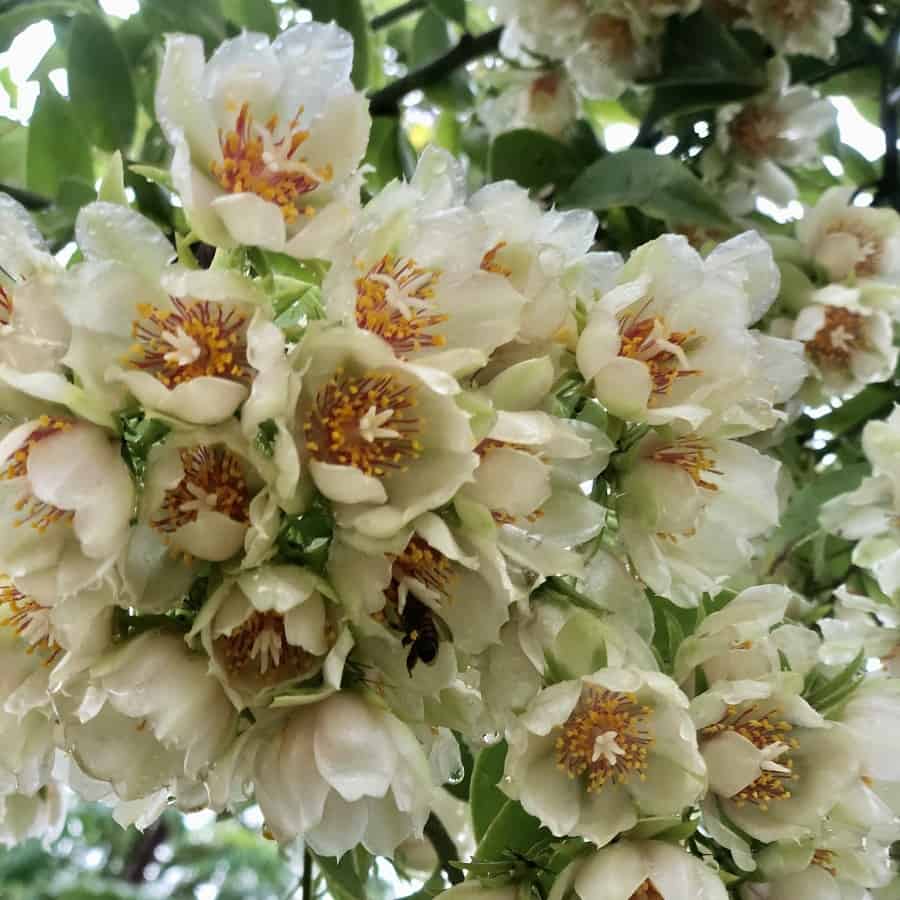
This shrub starts upright but its branches can climb up to 33 feet high, clinging to trees and walls. Its showy, fragrant flowers are followed by clusters of yellow berries. Just watch out for its strong, offensive odor!
Pereskia bleo
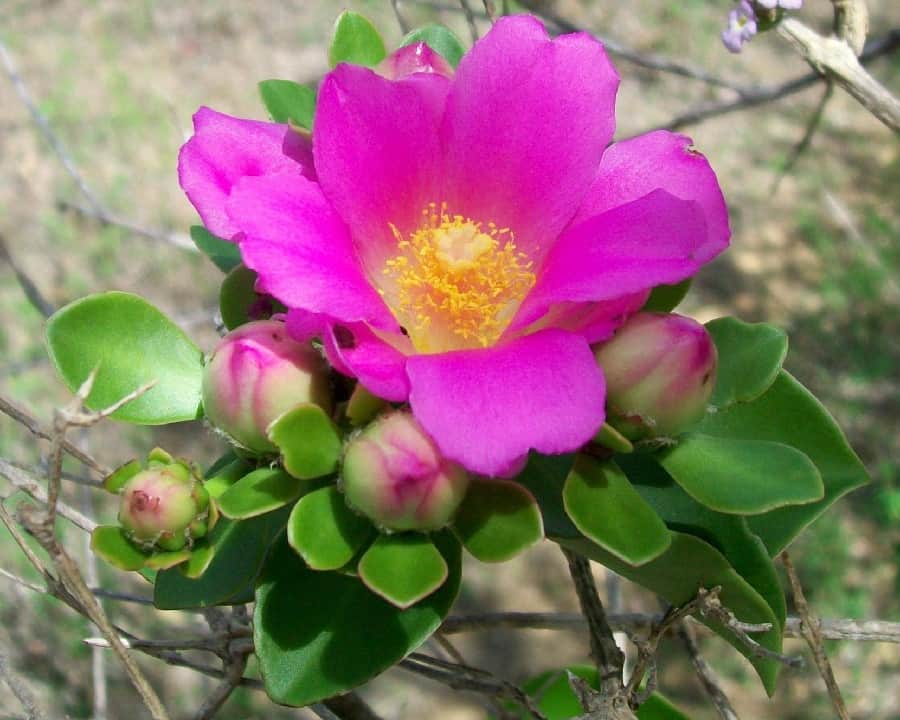
Usually a shrub or small tree, this variety can reach up to 26 feet tall. Its cylindrical stem is covered in large spines, while its bright orange-red flowers resemble single rose blossoms.
Pereskia bahiensis
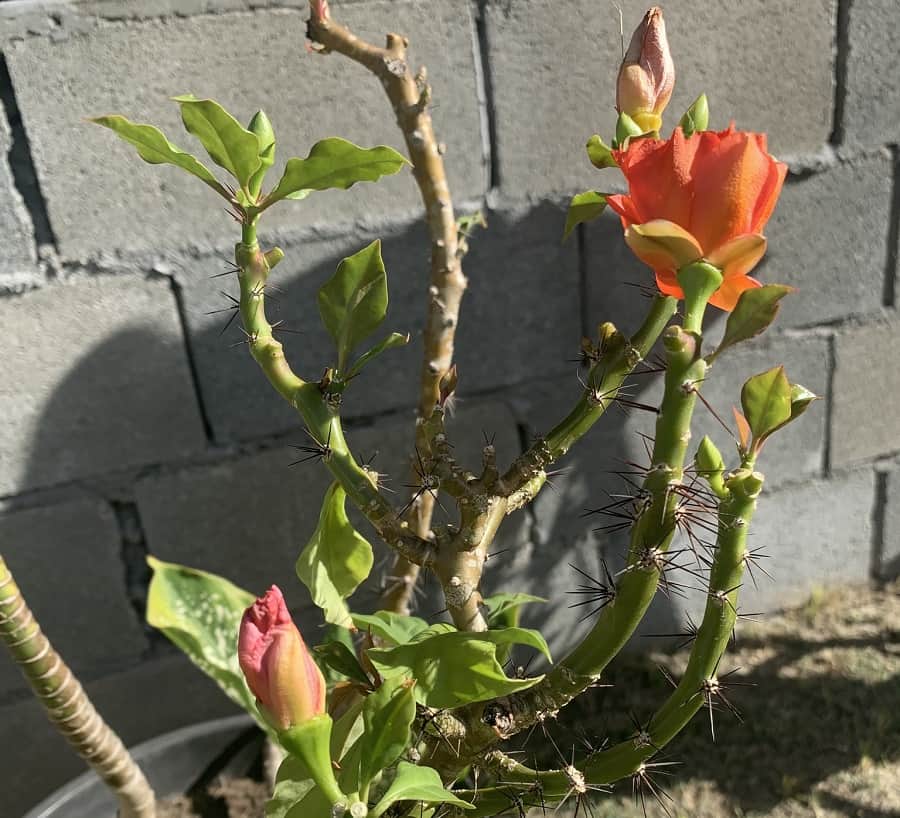
Pereskia diaz-romeroana
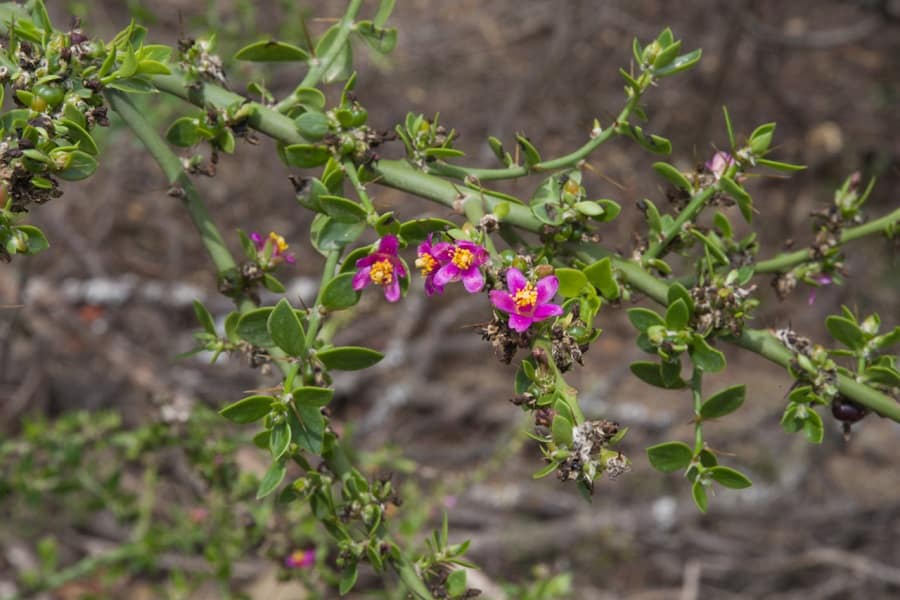
Pereskia grandifolia (Rose Cactus)
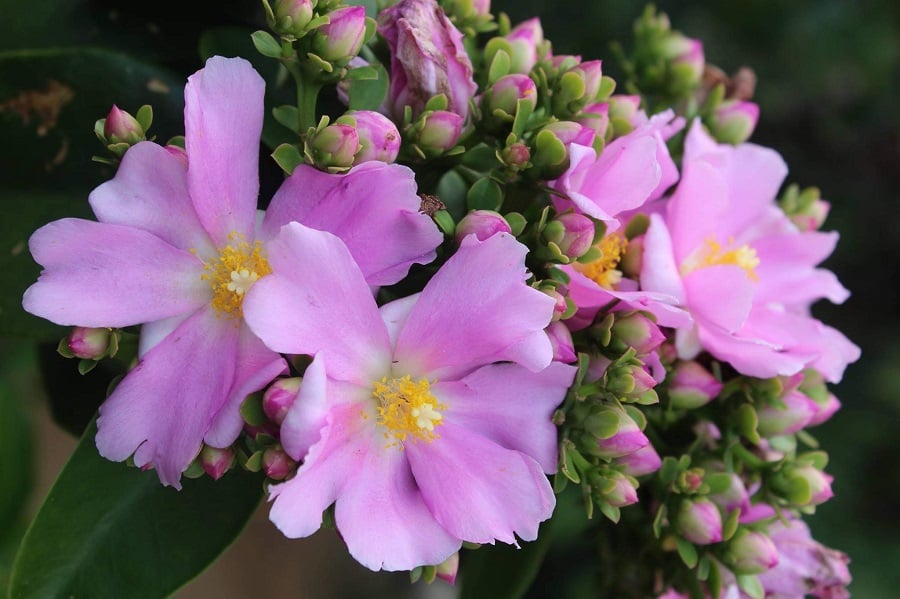
This evergreen or deciduous shrub grows up to 16 feet, with a rounded crown. It comes in two forms: the typical green variety and the subsp. violacea, which has purple-pink bracts and flowers.
Pereskia grandifolia ssp violacea
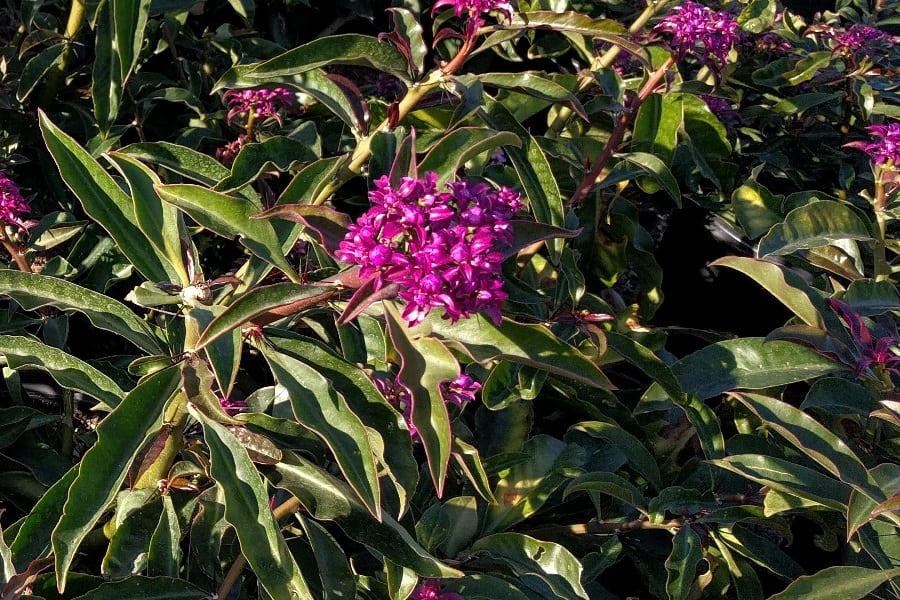
A small evergreen or deciduous tree or shrub growing up to 16 feet tall with a rounded crown. This subspecies is distinguished by its stunning purplish-pink or purple bracts and flowers. Initially mistaken for a separate species called Pereskia bahiensis, it was later recognized as a color variation of the typical Pereskia grandifolia. The vibrant purple hues of its blooms make this a real showstopper among Pereskia varieties.
Pereskia nemorosa
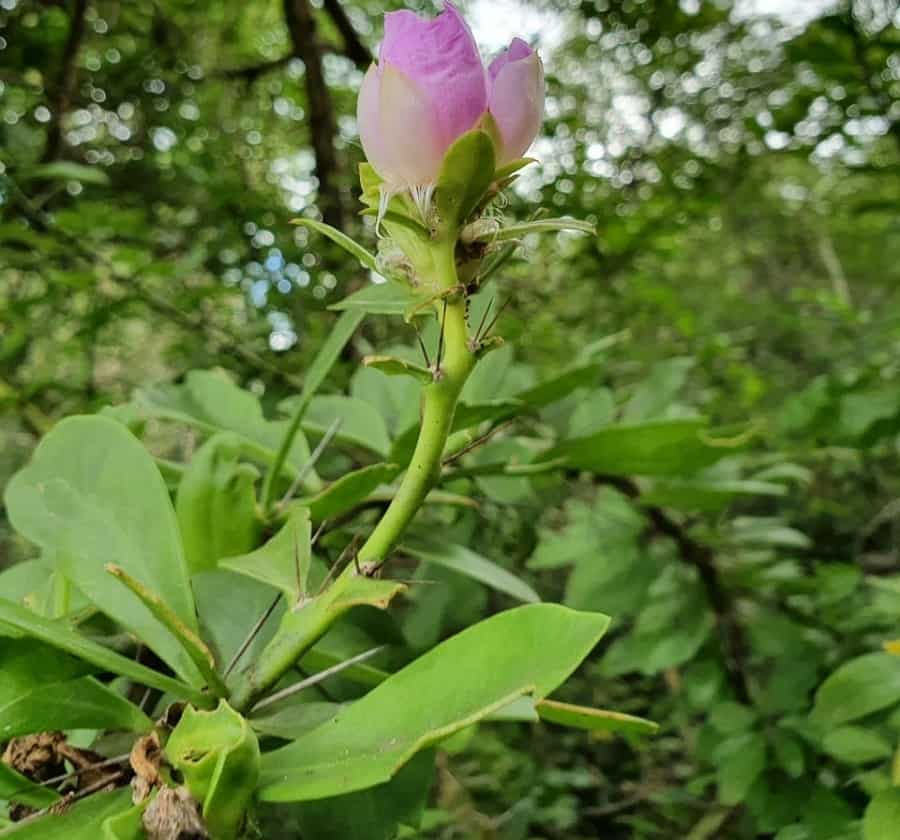
Pereskia quisqueyana
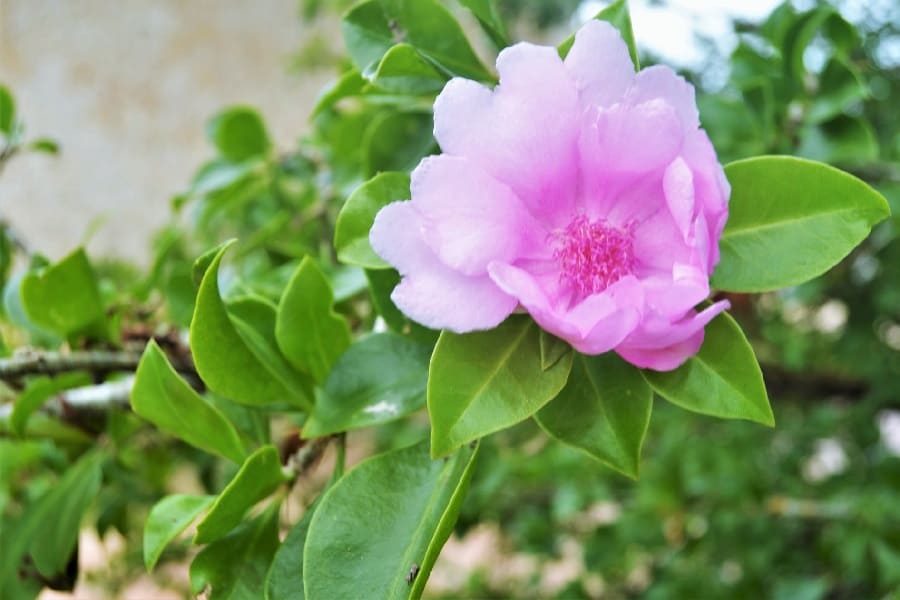
One of the rarest cacti, this species is found only in the Dominican Republic. It’s unique because it has separate male and female plants, and its beautiful leaves make it stand out from typical cacti.
Read also:
1,000 Types of Cactuses with Pictures
How to Grow and Care For Pereskia
Light
Pereskia cacti are sun-lovers! They need lots of bright, direct sunlight to truly thrive. While many cacti prefer some shade, Pereskia can handle even the most intense, scorching sun rays. If growing indoors, place them near a sunny window or under a grow light for at least 6-8 hours of direct light each day. Without adequate sunlight, their lush leaves will start to wither.
Watering
During the active growing season from March through September, keep the soil moist but not soggy. Water thoroughly, allowing excess moisture to drain away completely. These cacti can’t tolerate sitting in water for too long. In the winter months, cut back on watering but don’t allow the soil to become bone dry for extended periods. Consistent moderate watering is key for Pereskia.
Fertilizing
To promote beautiful blooms, feed your Pereskia cactus with a balanced liquid fertilizer every 2-4 weeks from spring through summer. A slow-release fertilizer worked into the soil can also provide seasonal nutrition. In fall and winter, fertilizing isn’t necessary.
Soil
Pereskia prefers a well-draining, organically rich soil mix. A blend of 2 parts coarse sand, 1 part peat moss, and 1 part loamy potting mix will provide the perfect environment for healthy growth. Good drainage is crucial to prevent root rot.
Temperature
Warm conditions are a must for these tropical cacti. Daytime temperatures between 70-90°F and nights above 50°F are ideal. They cannot tolerate freezing temperatures or frost. If outdoor temperatures dip below 40°F, be sure to move your Pereskia inside.
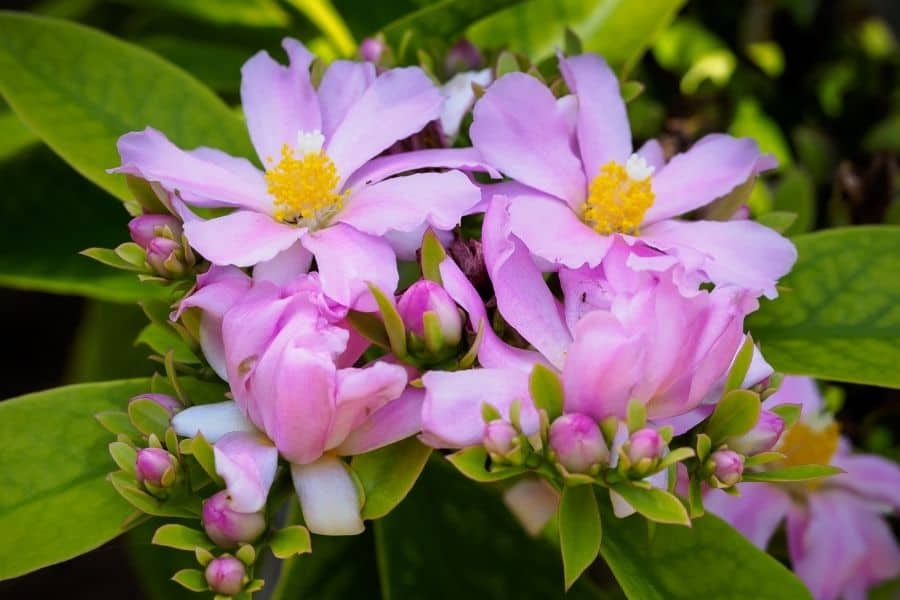
How to Propagate Pereskia
One of the best things about Pereskia cacti is how easy they are to propagate. You can quickly multiply your collection of these unique, leaf-bearing cacti through stem cuttings or seeds. Here’s a step-by-step guide:
From Stem Cuttings
- Using clean shears, take a 4-6 inch cutting from a healthy Pereskia stem, making sure it has a few leaf nodes.
- Allow the cut end to callus over for a few days before proceeding.
- Dip the calloused end in a rooting hormone powder to encourage faster rooting.
- Fill a pot with well-draining cactus/succulent potting mix.
- Make a hole and insert the treated cutting, firming the soil around the base.
- Water sparingly until new growth appears, indicating roots have formed.
From Seeds
- Fill a seed tray or pot with a moist, well-draining seed-starting mix.
- Sprinkle Pereskia seeds on the surface and cover lightly with more potting mix.
- Place the tray in a warm spot with bright, indirect light. Bottom heat can help speed germination.
- Keep the soil lightly moist and be patient – seeds may take 1-2 weeks to sprout.
- Once seedlings have their first set of true leaves, move them into their own small pots.
FAQs
The unique appearance and nature of Pereskia cacti tend to spark a lot of questions and curiosity. Here are answers to a couple frequently asked questions:
How do you pronounce Pereskia?
You pronounce Pereskia as “per-ESS-kee-uh”. The emphasis is on the second syllable. If you’re still unsure, you can listen to the audio pronunciation here.
What is unusual about the cactus Pereskia?
At first glance, you’d never guess Pereskia was a type of cactus! These plants break all the rules with their leafy, non-succulent stems and vibrant flowers. While most cacti have thick, spiny stems to store water, Pereskia has broad, persistent leaves more reminiscent of tropical foliage plants. Their cup-shaped, sometimes fragrant blooms are about the only hint that they belong to the cactus family. Seeing a Pereskia cactus covered in lush greenery and blossoms is a surprising sight that delights plant fans. Their unconventional looks make them true rebels in the world of cacti.
